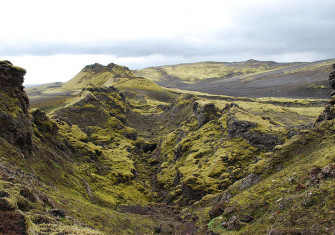The Eruption of Mount Tambora
Possibly the most destructive volcanic eruption of all time occurred on 10 April 1815.
 The volcano looms over the Java Sea from the northern shore of the island of Sumbawa, which lies towards the eastern end of the former Dutch East Indies, now Indonesia. Every now and again Mount Tambora erupts. Its 1815 explosion was possibly the most destructive ever recorded.
The volcano looms over the Java Sea from the northern shore of the island of Sumbawa, which lies towards the eastern end of the former Dutch East Indies, now Indonesia. Every now and again Mount Tambora erupts. Its 1815 explosion was possibly the most destructive ever recorded.
Tambora stood over 14,000 feet high in 1815, but when it blew its stack it hurled more than 4,000 feet off the top of it, leaving a crater more than four miles across and 2,000 feet deep. On 5 April a modest eruption occurred, as if the volcano was practising, followed by thunderous rumbling noises. Ash began to fall and on 10 April there were more rumblings that sounded like cannon.
That evening the eruption moved into full force with an explosion that was heard more than 1,200 miles away in Sumatra. The ground shook as massive boulders were tossed about like pebbles and caused havoc in all directions. Columns of flame shot up from the mountain and melded together to carry a plume of gas, dust and smoke miles up into the sky. Rivers of incandescent ash poured down the slopes at more than 100 miles an hour, destroying all in their way before they hissed and boiled into the sea. Ships in harbours were trapped in rafts of pumice stone, while tsunamis were driven across the Java Sea. Volcanic ash fell as far away as Borneo.
Ash and debris rained down for weeks and houses for miles around collapsed. Fresh water sources were contaminated and crops failed, while sulphurous gas caused lung infections. It is thought that 10,000 people had been killed instantly, but thousands more died of starvation and disease and the death toll in Sumbawa and neighbouring islands has been estimated at anything from 60,000 to 90,000.
Stamford Raffles, then governor of Java, which had been taken over by the British during the Napoleonic Wars, sent an officer to Sumbawa to report on what had happened. He found there were still dead bodies lying around, the villages were almost entirely deserted and most of the houses had fallen down. The few survivors were desperately trying to find food. An epidemic of violent diarrhoea had broken out, thought to have been caused by volcanic ash contaminating the drinking water, and had caused many deaths.
Tambora is classified by specialists as Ultraplinian, the most violent of all categories of volcanic eruption, named in honour of the Younger Pliny's description of the destruction of Pompeii by Vesuvius in AD 79. Such eruptions propel quantities of sulphurous gases into the stratosphere, where they combine with water vapour to create 'aerosol' clouds of drops of sulphuric acid. The Tambora eruption caused unusual phenomena around the globe. In the north-eastern United States in the spring and summer of 1815 the sunlight was dimmed and reddened by periods of fog, which wind and rain did not disperse. It was described as a kind of aerosol veil. London experienced spectacular sunsets at the turn of June and July, which are thought to have influenced paintings by Turner.
The following year brought far more damaging effects, with serious consequences for climate and the fertility of the land over much of the world, as global temperatures dropped. In mid-June 1816 Mary and Percy Shelley, Lord Byron and two other friends were staying at the Villa Diodati in Switzerland when the weather was so repellently rainy and foggy that they were trapped indoors. Byron suggested that they pass the time by each writing a horror story and that was when Mary Shelley began to create Frankenstein.
In June 1816 snow fell in New York State and in Maine, while frost was reported from Connecticut. In Canada the Quebec area had deep snow. Cold persisted through the summer months in North America and elsewhere and quantities of crops failed. The monsoon seasons in India and China were disrupted, with damaging agricultural effects, famine and cholera, and 1816 was called the year without a summer.
Such conditions persisted until 1819 and are believed to have helped create severe epidemics of typhus in south-eastern Europe and the eastern Mediterranean. Harvests failed in Britain and famine struck Ireland, Germany and other areas of Europe, sparking outbreaks of rioting and causing starvation.
Mount Tambora is still active. Its most recent eruption was in 1967.





